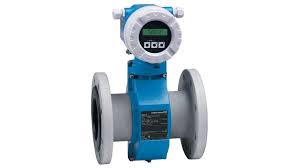Flow Transmitters
Flow transmitters are devices used to measure and transmit flow rate information in various fluid systems. They convert the flow data into electrical signals, which can be sent to control systems, data loggers, or other monitoring devices. Flow transmitters are crucial for process control, flow monitoring, and automation in various industries. Here are some common types of flow transmitters:
1. Magnetic Flow Transmitters: Magnetic flow transmitters, also known as electromagnetic flow transmitters, use Faraday’s law of electromagnetic induction to measure the flow rate. They are specifically designed for conductive fluids, such as water or other conductive liquids.
2. Coriolis Mass Flow Transmitters: Coriolis mass flow transmitters utilize the Coriolis effect, where the vibrating tubes or sensors twist in response to fluid flow. The amount of twisting is directly proportional to the mass flow rate.
3. Vortex Shedding Flow Transmitters: Vortex shedding flow transmitters use a bluff body or shedder bar placed in the flow path. As the fluid flows past the bluff body, vortices are created, and the frequency of vortex shedding is related to the flow rate.
4. Ultrasonic Flow Transmitters: Ultrasonic flow transmitters use ultrasonic waves to measure flow rates non-intrusively. They are suitable for both liquid and gas flow measurements.
5. Differential Pressure Flow Transmitters: Differential pressure flow transmitters measure the pressure drop across a constriction, such as an orifice plate, venturi tube, or flow nozzle. The pressure drop is proportional to the flow rate.
6. Positive Displacement Flow Transmitters: Positive displacement flow transmitters use rotating gears, vanes, or pistons to measure the flow rate. The rotation speed is proportional to the flow rate.
7. Turbine Flow Transmitters: Turbine flow transmitters utilize a turbine or propeller placed in the flow path. The rotation of the turbine is directly related to the flow rate.
8. Thermal Dispersion Flow Transmitters: Thermal dispersion flow transmitters use the principle of heat transfer to measure flow rates. They have two temperature sensors, and the flow rate affects the temperature difference between them.
9. Variable Area Flow Transmitters (Rotameters): Rotameters use a tapered tube with a float that moves up or down based on the fluid flow. The flow rate is indicated by the position of the float in the tube.
The selection of the flow transmitter type depends on the specific application, the characteristics of the fluid, flow range, accuracy requirements, and environmental conditions. Each type of flow transmitter has its strengths and is suitable for various flow measurement scenarios.

